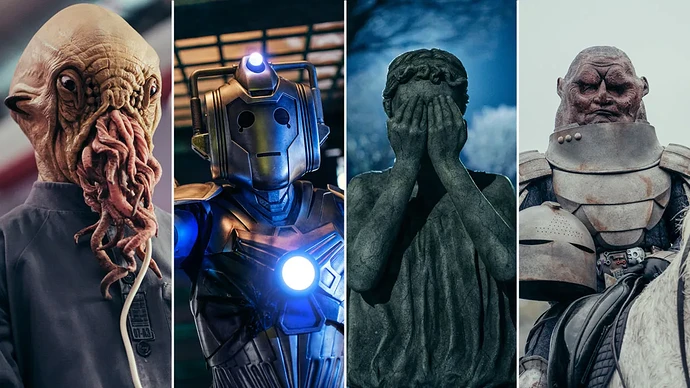We’re all used to the term “Doctor Who Monster”, used to describe pretty much any living thing that is neither human nor a part of normal Earth flora/fauna. It’s a shorthand used by the general public and the media to identify what is typically the threat of the week in a Doctor Who story.
The concept of ‘monsters’ has long fascinated me (hence this thread). This also ties in nicely with the Fifteenth Doctor’s assertion that “There’s no such thing as monsters. Only creatures you haven’t met yet.” So, my question is what precisely do we mean by monster? Moreover, how might we classify better?
The etymology of the word ‘monster’ is quite instructive. Monstre meaning malformed creature (medieval French). Monstrum from the Latin for omen of misfortune. This, in turn, derived from monere (to admonish, to warn or to instruct).
What, then, can we take from this? Three characteristics;
- Malformation (as in a deviation from normal form);
- Omen of misfortune; and
- Warning, punishment or instruction
Does a creature need to meet ALL three of these criteria in order to qualify as a true monster? Are two sufficient? How about a single criterion? If so, which?
Criterion 1: The criterion of malformation is the most troublesome here. Are we considering deviation from the norm to mean deviation from our expectations of normality? This would be deeply prejudicial for the unalike (which is, indeed, a core theme of much storytelling on Doctor Who). Thus, those who apply this criterion in defining a monster are showing their prejudice. The Doctor’s message is particularly important here. Alternatively, if we allow that differing from our expectations is not sufficient and that is deviation from the normal form of that species, we ensure that the term ‘monster’ only really applies to those individuals that are different from the species norm either developmentally or due to accident/design. Once again, this raises issues of prejudice. Once again, the Doctor’s message rings true.
I think, therefore, we must discount as monstrous anything that meets the first criterion. Creatures? Yes. Aliens? Often. Monsters because of their form? Categorically not. To classify otherwise is just plain wrong.
Criterion 2: A creature that is an omen of misfortune. Ooh, this is more interesting and ticks a number of Doctor Who boxes. By this criterion, the woman in ‘73 Yards’ could legitimately qualify as a monster. It isn’t that she, herself, is monstrous but that she is a portent of wrongness. This opens the doors for a large number of creatures that appear in Doctor Who (and aren’t necessarily malevolent themselves - although many, indeed, are).
Criterion 3: A creature that serves as a warning, punishment or instruction. This seems very similar to criterion 2 and, I agree, there is significant overlap. The ‘warning’ part certainly could be synonymous with 2. It’s the ‘punishment’ element that is a little different here. I’m now thinking of the Veil from "‘Heaven Sent’ as a definitive punishment style monster.
So, there we have it. In my humble opinion, the vast majority of creatures featured in Doctor Who (and casually referred to as ‘monsters’) are not monsters at all. They may be aliens, unknown creatures, robots, artificial intelligence or, even, people, but they are not true monsters. There are a handful, however, that certainly qualify (either by dint of criterion 2 or 3) and that these entities may often not be malevolent at all.
What other creatures etc. can people think of that would qualify as monsters according to criteria 2 and 3? Alternatively, is there anything I’ve missed in my exploration of the term ‘monster’ and its application to the worlds of Doctor Who?

